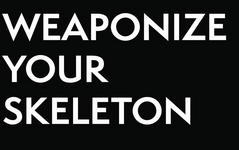Training to Wait & See
A frequent question we get is, “Okay, I get this whole violence thing, but what if—” and then it’s usually followed by something the other person is thinking of doing, trying to do, or just plain in the middle of doing. This is code for “I don’t want to get hurt.” Well, nobody does. If not getting hurt were something that you could reliably choose, it would be a central part of our training. But it isn’t.
The truth about violence is that you’re going to get punched, kicked, stabbed, whacked, and shot—whether you’re the “winner” or not. Any other outcome, e.g., you walked through it and put your person (or people) down and kept them there without getting a scratch on you, is pure luck. What you can realistically expect as the survivor is to limp out of there alive.
Accepting the reality of the situation ahead of time will save your life. It’ll keep you from quitting right at the point where things are at their worst. Let’s say you are trained in “knife defense”. And then you get stabbed. Your first thought will be omigod I screwed up which will lead to the result of screwing up—death. You’ll be thinking about the result of your mistake—I’m going to die!—instead of what you need to be thinking to survive, primarily take the eye.
Look at the difference there. We have an abstraction versus a concrete action. Which one do you want coming out of you when your life depends on it? It’s also important to note that the people who are best at violence completely ignore the “What’s he up to?” side of the equation; they simply put all their efforts into making violence one-sided, and keep it that way. They wade in and get it done, to the exclusion of all else. And so should you.
Success is our benchmark. We are going to do our best to model the efforts and behaviors of those who are successful at violence—in short, we’re going to act like the survivors. We are obviously not going to act like the dead (that goes without saying), nor are we going to model behaviors and action that we wish were present. Rather than accessing violence the way we wish it worked, we’ll look to reality for our training cues. This is a huge leap into uncomfortable spaces.
It would be really nice if we could impose our collective will upon violent conflict—if waving your hands a certain way meant you couldn’t be stabbed or shot. In a lot of ways, this is the definition of magic, and in many places such training is elevated to the status of superstitious tradition. You’d be best served to never forget that the intersection of magic and reality is often tragedy.
Instead of training the way we wish it were, we’re going to train the way it is. We’re going to start at the point of injury, and let the other person worry about waiting and seeing. They can wait and see what you’re up to while you do it to them.
Reality is a smog-belching bulldozer with the elves and fairy folk of nice ideas all broken and snarled in its iron treads. If you have a choice—and you do—then put yourself in the driver’s seat, and the other person beneath the blade.
— Chris Ranck-Buhr (from 2006)



Leave a Reply
Want to join the discussion?Feel free to contribute!